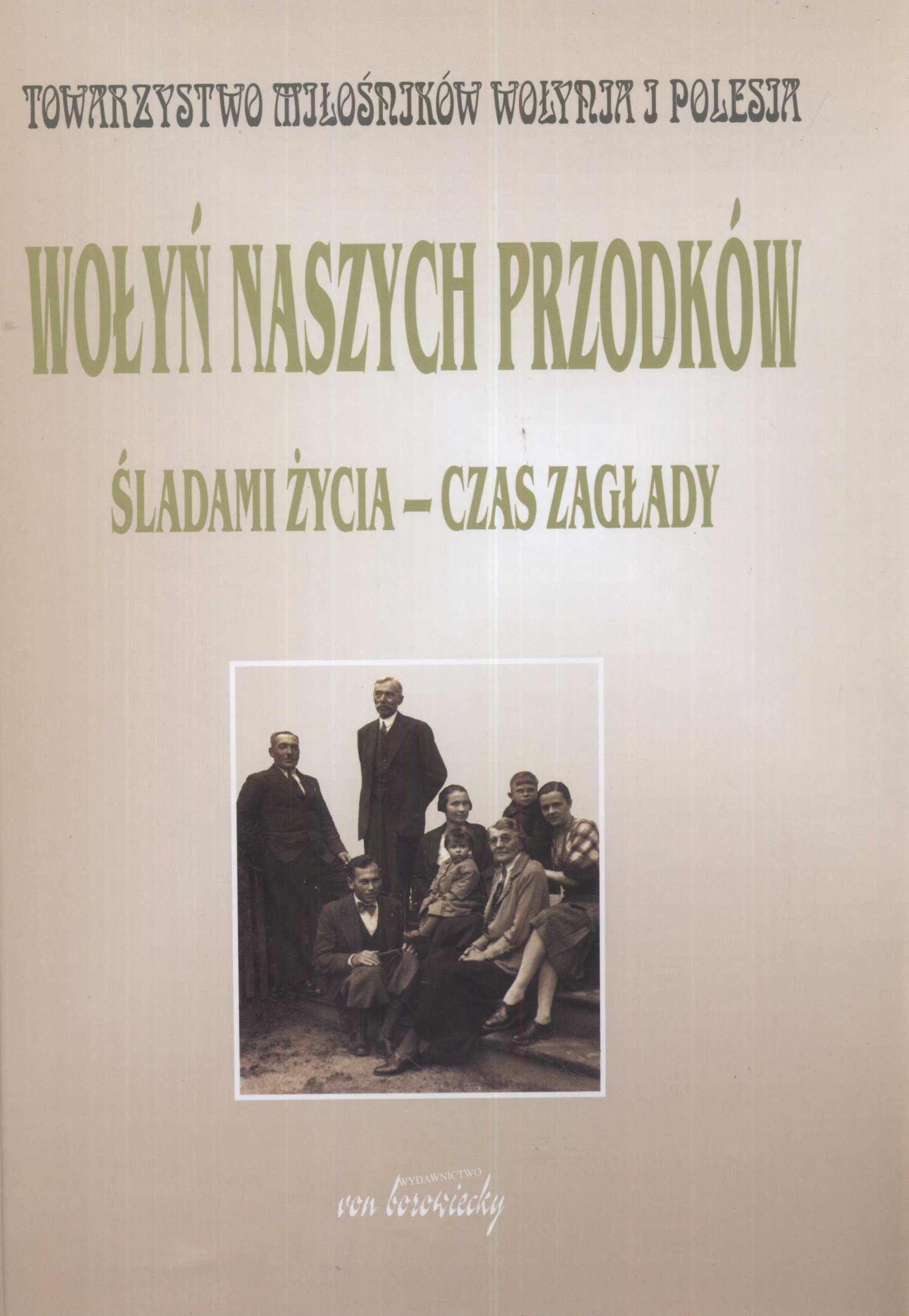Ukrainian UPA Genocide of Poles Volyn Today Siemaszko

Wolyn Naszych Przodkow, by Ewa Siemaszko. 2010?
Poland’s Jews are Not the Only Vanished Communities! The Poles of Wolyn (Volyn, Volhynia) Are a Forgotten Vanished Community. The Ukrainian OUN-UPA Genocide of Poles, the Teheran/Yalta Acquiesed Soviet Confiscation of the Kresy, and the Soviet-Directed Expulsions of Poles
Title: VOLYN OF OUR ANCESTORS. This work contains approximately 700 photos from Wolyn. Most of these show the idyllic rural life before WWII. WARNING: There are also graphic photos of the mutilated bodies of Poles murdered during the Ukrainian-fascist OUN-UPA (or UIA) genocide. A smaller number of photos are of recent origin.
JEWS REMEMBERED: POLES FORGOTTEN
Very much has been said, in media discourse, about the Jews of Poland as a once-flourishing vanished community. Surprise–we never hear about other vanished communities, such as the Poles of Volhynia and other parts of the Soviet-annexed Kresy.
Few Poles live there today, and there is one photo of a Polish school there. (p. 103). Some of the churches have been restored since the end of Soviet rule, but these have generally been given to Ukrainians. Otherwise, the only traces of Polishness, in most places in Wolyn, are the cemeteries with Polish markings and the memorials at the locations of mass murder of Poles during the OUN-UPA genocide.
THE UKRAINIANS COMMITTED GENOCIDE AGAINST THEIR RECENT POLISH FRIENDS
Before WWII, Poles and Ukrainians lived together amiably. OUN separatist and genocidal propaganda then turned Ukrainians against Poles. There are chilling 1930’s photos showing specifically-named Ukrainian murderers-to-be standing next to Polish victims-to-be. (e. g., p. 49, 64). The relatives of Edward Smigly-Rydz were among the eventual victims. (p. 152).
A SUMMARY OF THE UKRAINIAN OUN-UPA GENOCIDE OF POLES
Ewa Siemaszko, relying on the magisterial work of her father, Wladyslaw Siemaszko, summarizes the unfolding OUN-UPA genocide under Soviet and especially Nazi occupations. Murders of Poles took place at 1,721 documented locations, comprising a total of over 36,500 victims. Information is lacking on another 1,787 locations where Poles lived, and the projected total of Polish victims stands at 50,000-60,000 for Wolyn alone. (p. 22). The Ukrainian fascist-separatist destruction of everything Polish included about 70% of Wolyn’s Polish parishes and their properties. (Leon Popek, p. 24). And yet there are those who would have us believe that the OUN-UPA acts were not genocide!
Many photos show the sites of the largest massacres of Poles. This includes the quarry town of Janowa Dolina. (p. 72). One photo from Kowel (Kovel) County, taken in 1991, shows an eerie, solitary hut. It was the only surviving structure of a Polish village destroyed by the OUN-UPA in 1943. (p. 113).
THE POLES FOUGHT BACK, WITH SOME SUCCESS
The Polish death toll could easily have been 3 (or more) times higher were it not for evasive and defensive measures taken by the Poles. Apart from those Poles who fled their farmsteads and found refuge in towns that contained German or Hungarian garrisons (with most of these Poles then sent to the Reich for forced labor), there were 13 successful samoobrony (fortified villages) where collectively several tens of thousands of Poles gathered and fought-off the genocidal OUN-UPA attacks, often against overwhelming odds. (pp. 20-21, 152-153).
A painting and photo is shown that is related to the partially-successful defense against an UPA attack against the Polish-filled church at Kisielin (Horochow (Horochiw) County)(pp. 62-63). Another photo shows a memorial cross at the site of the largest Polish samoobrona, Przebraze (Luck (Lutsk) County).(p. 209).
THE SOVIETS CONQUERED THE KRESY IN 1939, AND NOW GOT TO KEEP IT AS A RESULT OF THE TEHERAN AND YALTA BETRAYAL OF POLAND
The OUN-UPA genocide was only the beginning of the de-Polonization of the Kresy in general and Wolyn in particular. The Soviets, after the 1943-Teheran agreed-to annexation of the Kresy and expulsion of nearly all Poles, continued the physical destruction of everything Polish. Some Polish churches were converted to agricultural storage centers and the like (e. g., p. 60), while others were destroyed–even decades after WWII. (pp. 150-151).
To see a series of truncated reviews in a Category click on that Category:
- All reviews
- Anti-Christian Tendencies
- Anti-Polish Trends
- Censorship on Poles and Jews
- Communization of Poland
- Cultural Marxism
- German Guilt Dilution
- Holocaust Industry
- Interwar Polish-Jewish Relations
- Jewish Collaboration
- Jewish Economic Dominance
- Jews Antagonize Poland
- Jews Not Faultless
- Jews' Holocaust Dominates
- Jews' Holocaust Non-Special
- Nazi Crimes and Communist Crimes Were Equal
- Opinion-Forming Anti-Polonism
- Pogrom Mongering
- Poland in World War II
- Polish Jew-Rescue Ingratitude
- Polish Nationalism
- Polish Non-Complicity
- Polish-Ukrainian Relations
- Polokaust
- Premodern Poland
- Recent Polish-Jewish Relations
- The Decadent West
- The Jew as Other
- Understanding Nazi Germany
- Why Jews a "Problem"
- Zydokomuna